 1 / 10
1 / 10

 1 / 10
1 / 10

Ali Esad Göksel harmonizes his deep living culture with his interest and profession in architecture, academia and literature. From Uşak Carpets to Byzantine Icons, archaeology to classical art including paintings and sculpture, he is one of the very few names who has made his wide collection a part of his life and crowned collecting with a selective learning process. We were invited to Mr. Göksel’s Office which reminded us of a little museum.
Let’s start with the most basic question: when and how did you start collecting?
After I completed my studies abroad, I returned to Turkey and started working at University. Those days, there was no authority such as YÖK inspecting universities, which gave our department enourmous freedom and almost limitless autonomy. The head of our department, Süha Toner, was also the head of Moda Deniz Kulübü (Moda Sea Club). Caring a lot about the Club, he gave us an opportunity to work freely in the department. We had plenty of free time. As an assistant, I made an unconventional decision and I suggested to open a new class for graduates, focusing on the reproduction, planning and design of well-known grand architectural buildings. Taking the Pantheon in Rome for example, we were going back in time, exploring its design and possible processes of development and planning. Through this, we were deconstructing 5-6 structures, and reassembling them together with the aim to discover how they were built. In that time, I was young. There were only a few years between me and the students; the only difference between us was my PhD. Girls were in love with me while the boys hated me (laughing). This was the toughest period of my life; I was working like crazy in order not to be embarrassed. Perhaps, I should never have dared to do anything like that, because it was very difficult.
However, as they say ‘’ignorance is bliss’’, I dipped my toes into the water. As I said, there was enourmous freedom in our department, which made things easier. It was at that time that I developed an interest in archaeology. Concurrently, the region and Turkey were offering excellent environment for developing this interest further. And the high society was not yet involved in archaeology. There were two types of audiences; first, foreigners living abroad were potential buyers. Thank goodness, there were legal obstacles in their way. Secondly, there were innocent amatuers like me. With limited knowledge I did the right thing and started going to the Grand Bazaar. There were a group of traders… All kinds of ‘’goods’’ and commodities were being delivered to them for classification. After being exported, the remaining ones were left in the hands of these traders. One of them was the late Uncle Halo. I don’t know why but he liked me, maybe because it was because of my naivety and pure mind.
One day, he sat me down and said ‘’There is only one way to learn this business. You have to touch the objects. If your brain is working, the more you touch, the more you learn about objects, and undestand their materials.’’ What he said was right. May he rest in peace; he was a great man… He was able to understand and tell whether an object is authentic or not, simply by testing it with his teeth. This is to say that his experience came from his practice. Once you learn about something, you start feeling good about it, and start to appreciate your interest. If you lack knowledge, you will struggle around edges and corners. More knowledge brings more love. This happened to me, the more I loved, the more I learned.
However, honestly I am not a collector. A collector restricts his area as much as possible and focuses on it. He walks in a certain lane and dominates it. I, however, am constantly falling in and out of love (laughing). It is impossible for me to be a real collector while loving one thing and then loving another. Because of this, I have developed an interest in different things over time.
Can you please give us examples of objects that are important to you, so that we can get a glimpse of the scope of your collection?
One of the things that I have a deep interest in is calligraphy that is made with the technique known as
Edirnekari. Over time, I have developed a special interest in objects from our cultural heritage. My father was a religious man, and this definitely had an impact on me. As I said, what I liked initially was Edirnekari calligraphy, and I spent many days and nights on this. There were other different factors that influenced my interest. For example; in the Mimar Sinan Fine Arts Academy, I was taught by Emin Barin, who was the most important calligrapher and a pioneer in his field in Modern Turkey. He had a major impact on us. Matters like knowledge, relationships and luck are highly motivating. He organized meetings in his workshop. I recall that we developed a project together entitled ‘’A Home for Ahmet Hamdi Tanpınar’’ for one of the architectural workshops.
‘’As an architect, if you tell me that you have a land here and you want me to draw a plan for it, I will probably give you an appointment in 10 days time. However, if you tell me that you have an object left you from your grandfather, I can immediately come to you to see it with my own eyes.’’
Then something happened and I wanted to gain knowledge on Byzantine Icons, and hence turned my attention to them. Behind this decision was my realization that the Byzantine Empire was a part of our heritage. What is answer to the question ‘’How can you own something?’’ My answer is, if you want to own it, you should know it. If you hold it loose with ignorance, someone else will show up and claim ownership. I was living in the Empire’s capital and I read about it, as if I was learning like an amateur. After this, I decided to collect Icons. That’s another trait of me, I can’t collect objects simply because they appeal to my eye, I need to learn and know more about them first. So, I had to have knowledge in many details such as the period, provenance and iconography of the Icons.
It was the right time to collect Icons, because of the dissolution of the Soviet Union, which eventually gave rise to some financial problems, causing people to sell. Many valuable objects including unique examples of Icons were brought here from the Eastern Block of the union. This made it possible for me to access objects that were later called ‘’Post Byzantine Icons’’. Among them were really fascinating pieces.
Then, I experienced some technical problems with some objects that I acquired. They were brought here from another geography with different climatic conditions. The temperature and humidity levels here were dramatically different from the conditions of temperature and humidity of their origin. I immediately consulted museum specialists on that matter. Their first advice was that I should keep the objects horizontal, to prevent from cracking and fragmentation. They also added that they can fix the cracks after they rest for a while. When a museum professional says ‘’a while’’, he/she means at least 4-5 years. The big objects in the collection have been resting since approximately 3 years, they will be restored at the appropriate time. When I first heard about this, I was extremely worried and baffled. After the initial shock, I decided to keep calm, and realised that there is a solution for everything. While this incident was the worst thing that might happen to a collector like me, it was normal for professionals, who approached the problem calmly. They said objects should get used to the climate and environmental conditions, but still it wasn’t possible for them to say anything certain.
‘’My collection is a tool through which I tell my own story and add things from myself into it. As Rumi says ‘’I was raw, I became cooked, I was burned’’. You become cooked by touching objects, by gaining experience. My collection is the story of my maturity.’’
Can you please tell us how are you building your collection? Where does your passion come from?
I am a calm person, I don’t have big expenses. When it comes to buying things that I like and love, I am quite weak bu nature. Especially if I have a bee in my bonnet... As a result of the problem that I experienced with archaeological objects, I became more cautious and I slowed myself down. I immediately had to find a new love, Turkish carpets.
For example, here you see two carpets from the 16th century. I.e. they are 500 years old, and were made in the same city, Uşak. I would like draw your attention to how different they are! They are from a museum’s collection in Texas. I bought them from an auction that was held in Christie’s New York. They are called ‘Uşak Lotto’ and they have a well-known story.
These objects that are highly valuable even now were made for immortals rather than mortals, to be sent either to the Palace or abroad. They were one of the most luxurious objects of the time, which made them almost inaccessible. There was a process of evaluation to purchase them, during which you had to request a purchase order.
These carpets for example, were made in the 1550s for the Doge of Venice. The Doge commissioned a portrait of himself to Lorenzo Lotto (1480-1556/57), an important artist from the Venetian School. When they were planning the composition of the painting, the painter suggested placing this carpet which was a part of the Doge’s life, on the table, and hence included it in the painting.
Lotto depicted other carpets with a similar style and fashion in his paintings, and as a result these carpets started to be known in the literature as Uşak Lotto carpets. In the tradition of European painting, it is possible to see many examples of Turkish carpets. Doge gave this to his lover as a gift, and her family preserved and kept it for many years. Finally around the 1800s, they sold it to a millionaire from Texas, who later, bequeathed it to the Museum that he founded. During the last economic depression in the United States, museums were allowed to sell objects in their collections in order to raise money, and as a result a special auction was held. It drew interest from the entire world, and was organized in New York. I participated in the auction via a midnight phone call, and with an incredibly daring move, I bought this carpet. Honestly, I am now very pleased with this purchase.
‘’Sometimes I ask myself why I do not spend money on reasonable things, just like anyone else. Of all answers that I give to myself, the most important is exploration. To explore, conquer and touch rare things…’’
When I was very pleased with this carpet, I was curious to know more about it and know more about this subject. They did other things in Uşak. The Ottomans were a very interesting civilization. Although we almost very little about what they did, we are boasting about their achievements. Seriously, I believe I am doing this too. It is certain that we know nothing unless it is popular. For example, what did the do when they acquired Transylvania? They built an administrative system. In the system, they were not involved in local administration. They appointed an administrator from an aristocratic background and from the local population. Of course, Palace officials were also there. Everyone paid great attention to the Palace officials and their way of living. Then one day in Transylvania, they noticed Turkish carpets and their heritage. Carpets were integral part of life, from social life to childbirth, from wedding to death. In the meantime, Transylvanian Churches were creating intense propaganda on hell to the local people who were recently converted to Christianity. To promote the good deed and heaven, they were driven into our colourful and floral carpets, which reminded them of heaven. They placed orders for Uşak carpets. There are very few remaining carpets of this type, the rest is lost. This type is called ‘’Transylvanian carpets’’ in literature. We almost have no remaining examples in Turkey, only one or two in museums. The rest is in Transylvania.
These carpets are almost kept as original and authentic for three reasons. Firstly, they were in the property of the church, and thus they were never stolen. Secondly, they were not worn because they were hung on walls rather than being placed on the floor. Thirdly, humidity and light levels inside the Church were stable. This is something that we should be grateful for.
It is very interesting that some orientalist interests began with these carpets. Cultural encounters and relations encouraged things like Mozart’s Turkish March or architects to think about the stories of the East. I was unlucky because by the time I started to develop an interest in carpets, United Arab Emirates like Abu Dhabi started to establish museums. Given that these Emirates that were founded in the 1950s did not have a long and rooted history, they started to establish museums and collections focusing on Islamic heritage, and for this, they were collecting every type of Islamic objects.
Let’s say while a collector like me can pay 10, they are paying 10 million for an object. That is the correlation. The same is in effect in Contemporary Art. For example, Princess Al Thani is the most important figure in Art Basel. They have a budget of billion dollars!
As I said, on the other hand, I am pleased. I am not a person who likes moaning. I know who I am and this is a part of my personality. I want to turn my weaknesses into advantages. Like I said before, I am falling in love quickly, that I am constantly keeping my eye on other things (laughing). Afterwards, I start thinking that this should be a good thing, and shifted my focus on other things.
What other works of art are you collecting? Can you recommend us an untouched field?
Modern Turkish Painting. I think the wording ‘’Modern or Contemporary’’ is tricky; so let me make it clear, I am very much interested in Turkish painting after the 1980s. Yet I am not willing to possess it. I want to know what is done in the field and by whom it is done, and I want to know it to impress. The preceding period, however, the period between 1920-1980, is something that I want to possess. This is not a reaction but rather it is a naive, personal choice.
As an untouched area, I would like to recommend textiles that were used in daily life. They are being collected abroad. Moreover, today a proper Ottoman textile is gaining value. We have high quality textiles in the Topkapi Palace. Also I know that there many examples in Anatolia. This is what an Empire is like. Things can exist in places that you do not expect. These textiles are delicate, they can easily be destroyed. As I know one of the best collectors in the field in Turkey is Hasan Colakoglu. This shows us that the field is not entirely untouched in our country.
Would you consider your collection as an investment?
Whoever answers this question by saying no, he/she is not sincere. That is to say that it is a lie. Of course it is an investment. I won’t sell any of my objects that you see here. If I quote my father ‘’May God never make me sell’’ I know how much an object costs. Especially bankers are different today than they were in the past. On that matter, they know everything. They are sending you some documents, and putting them into your face. In this case, it is your fault unless you know how much does a Matisse sketch cost. Thinking about a 100 dollars Matisse sketch that you bought by chance in a flea market, when it actually costs 180.000 dollars, surely collection is an investment.
I want to add that investment is an unclear concept; it might be a speculation, something that is not innocent. This is definitely not my purpose. However, if one day, by one in a million chances, I would like to sell something, I would like to know its value.
There are some collectors who are collecting objects merely for investment. Why not? Let me give you an example from another subject that I am interested in, wine. Let’s think that you have ‘’1999 Romanée Conti’’ We know that one bottle costs 40.000 dollars in Hong Kong. 15 years ago, it was impossible to earn this money that one can get from a bottle of wine that costs 2.000 dollars. In essence, this is a profitable field, and for that reason, there are investors and consultants. A pool is created, and by taking advice from investment consultants and professionals who know objects, long-time strategies are set and hence purchases are made. This leads to market creation and domination. This is what I understand from investment. It is a natural process. Why should not one do this? You are using the knowledge that you have, for the purpose of investment rather that collecting. Is this frowned upon? I absolutely think it is not! But let me add that, this is not for me.
Do you have any plan for the future of your collection?
Regarding the future of my collection, everyone that I know asks me the same question, whether I would think of establishing a museum. No. Firstly, I won’t be able to afford it. Secondly, to have an institution like a museum, one should have been on a certain path. Yet, I walked through a wide area of interests, taking me to different paths. Furthermore, I am still walking. Of course objects in my collection can be subject to academic studies from time to time. For example, recently an important name who carries out research on James Melleart’s ‘’Pilgrim’s Mound’’ asked me about 40-50 objects in my collection, for an upcoming book. It is an honour to contribute to academia and research.
As my next generation, I have a son. He has grown up by breathing, by touching these objects. When I ask him humorously ‘’Are you going to sell them after me?’’ he gives me a certain answer ‘’Not even if they put a gun to my head’’ (laughing).
‘’I think collecting is an important notion that should be highly valued for a nation’s heritage and culture. The reason is that: collectors are like non-governmental organizations. They take burden off the state’s shoulder, and after accomplishing their mission, they transfer the trust to future generations. We should be grateful for that.’’
What is collecting?
Sometimes I ask myself why I do not spendi money on reasonable things, just like anyone else. Of all the answers, the most important is exploration. It is very pleasing to explore, conquer and touch rare things… I am feeding my soul with this. Sometimes I can’t understand that how the previous generation put valuable things behind a glass case. Though I respect the past, I can’t understand. One should touch the objects as much as one should preserve them. An object that I have, should definitely be with me, and become a part of my life. This experience means a lot to me.
Being a collector means pursuing something that you are in love with. We can think of it as a relationship. You are chasing a woman whom you love and about whom you want to know everything. This is love!
How do you purchase your objects?
I used different ways of acquiring objects in every period. There was a period during which Turkey was nearly free and limitless. Everything was in Grand Bazaar. It was accessible and known to all. Today I am still interested in archaeology; however, I have less desire to collect and possess archaeological objects.
As an architect, if you tell me that you have a land here and you want me to draw a plan for it, I will probably give you an appointment in 10 days time. However, if you tell me that you have an object that is left you from your grandfather, I can immediately come to you to see it with my own eyes.’’
Why I don’t want to buy? One reason is that these objects are very expensive. Secondly, museums began to make things harder. As much as the lack of control was a problem in the past, new problems are arising, and adding extra pressure on things. When people who hold archaeological objects want to sell them without any problems, they will seek other channels.
Turkey has become an unusual country in many ways. For example, I want to buy a Konya carpet and the man who owns it, has only a part of a carpet rather than its whole. The carpet is left to him from his grandfather, but he had to share it with others. So, they cut it half, and then cut it again. It sounds like a joke but unfortunately this is reality. When I ask its price, he gives me a price equal to Christie’s or Sotheby’s auctions. And it is impossible to tell him why this price is not acceptable. Because of these difficulties, one eventually decides to go abroad, because it is still possible to find whole carpets there.
Can you please tell us an interesting story that you had while collecting objects?
I went to Italy with my client, to buy furniture for a big hotel that I was designing for him. We were in Venice, while my client and his wife were resting, I went outside. I was wandering around the city that I love and where I lived before. It was a winter day, and I ended up in a flea market. By luck, I arrived right before it was closed, while they were packing. In one of the stalls, I saw a young and pretty saleswoman. On her stall I saw an Iznik tile with 20 cm X 20 cm dimensions. When I asked its price, she asked me in return whether I was a buyer or just interested in chatting. I said both, and then she said ‘’Honestly, I don’t know its price, my mother got it from a late friend’s house, you can pay 200 euros.’’
I had to pay in cash but I didn’t have that much money on me. So I said ‘’I can give you 100 dollars and in the evening we will have dinner and wine together?’’’ Then she said ‘’150 euros’’ I payed the price immediately. That piece was worth 5-6.000 pounds. A person can really be lucky abroad.
It was like winning lottery: Think of this, on a winder day by chance, you are seeing a pretty girl in a flea market and then noticing a treasure standing on her stall!
If I ask you what does collecting mean to you?
I think collecting is an important notion that should be highly valued for a nation’s heritage and culture. The reason is that: collectors are like non-governmental organizations. They take burden off the state’s shoulder, and after accomplishing their mission, they transfer the trust to future generations. We should be grateful for that.
There is a book titled ‘’The Language and Roots of Turkish Carpets’’ and published in Milano. One of the authors of the book is famous archaeologist James Mellaart, who was a pioneer in the discovery of ‘’Anatolian Neolithic’’, Catalhoyuk. The second author is Udo Hirsch, an art historian and important expert in carpets. The third author is a museologist and an important kilim and rug expert, Belkıs Balpınar. What I find pleasing about this three-volume, unpublished book is that it tells the story of how things we have today were not entirely brought from the Central Asia, unless supposed. The language of carpets comes from Anatolia, it reflects interpretations of ancient civilizations. I think we take pride in this. This is heritage, and we are neither excluding nor rejecting it. On the contrary, we are harmonizing it with our own culture, interpreting it, and hence turning it into a higher culture. It is a dynamic language that comes from the Hittites, Urartus, Phrygians, Greeks, Romans and Byzantines.
This means that what matters most is continuity. Secondly, what is being a collector? Who is a collector? Once we ask these questions, we are talking about a person who puts his mind and heart into something. Someone who chases a subject and reads about it. Also someone who is in service that has a function. A collector acts like an institution. A collector makes the objects a subject for practice and knowledge. In this sense, we are talking about people who transfer knowledge and heritage to future generations.
What is your advice to people who are enthusiastic in collecting?
My advice to enthusiasts: Whatever interests you, first learn what that thing is. You shouldn’t buy something just because it is popular or fashionable. You should chase it with questions like ‘’what, how and where, what is the story behind what I love, what is its cultural value in addition to its price?’’
You should learn and love. Your object should be more than a decorative element in your life. My collection is a tool through which I tell my own story and add things from myself into it. As Rumi says ‘’I was raw, I became cooked, I was burned’’. You become cooked by touching objects, by gaining experience. My collection is the story of my maturity.
This interview is conducted by Ali Gazi on behalf of Art50.net for TEB Private.



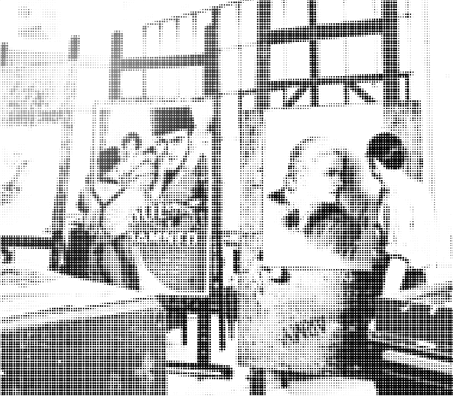



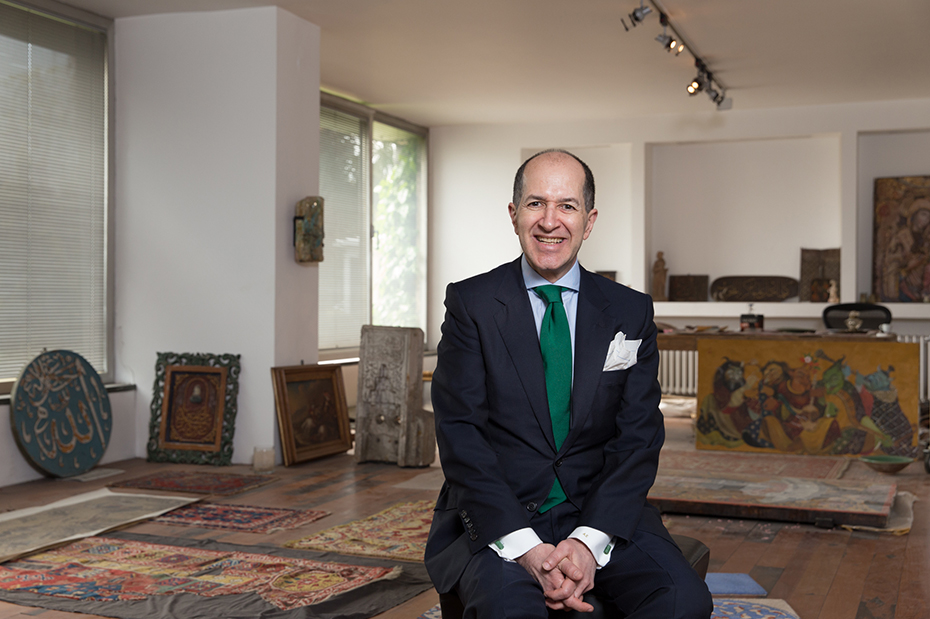
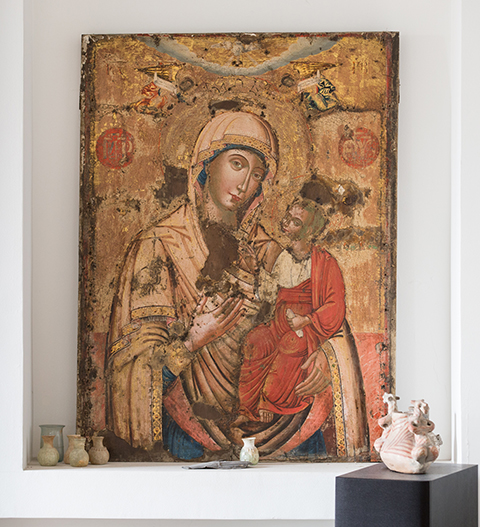
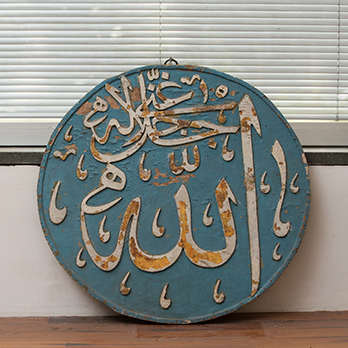


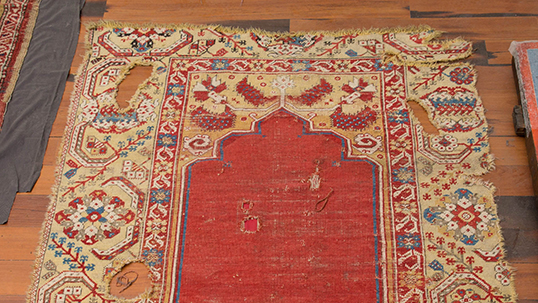
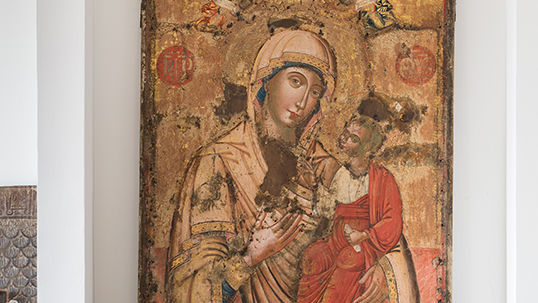
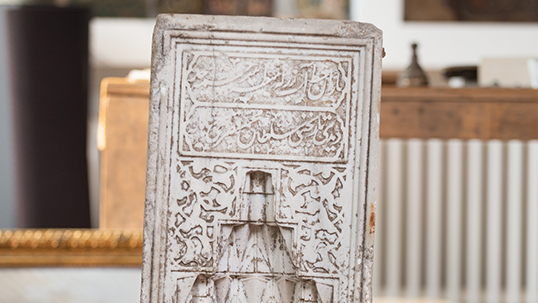
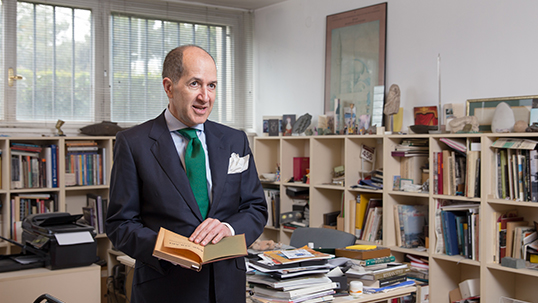
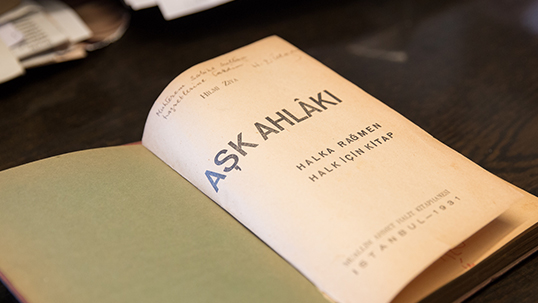
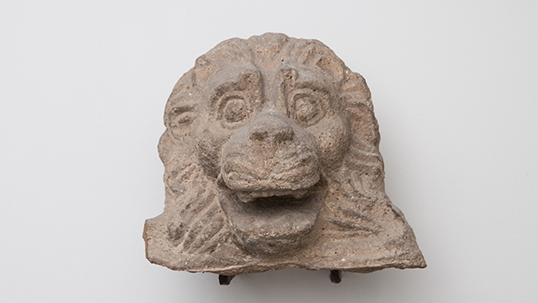
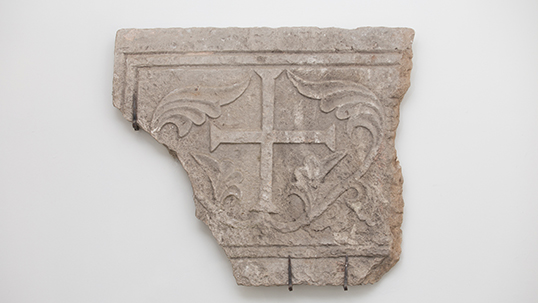
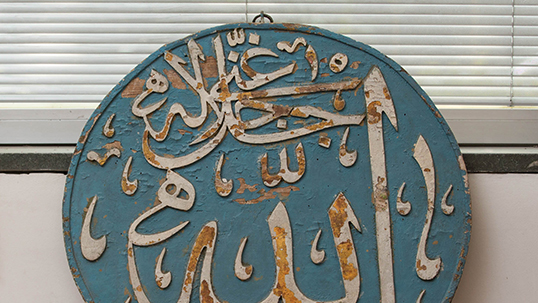
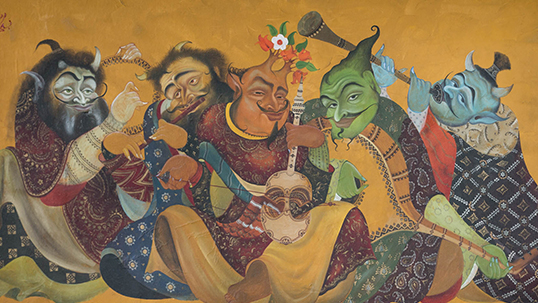



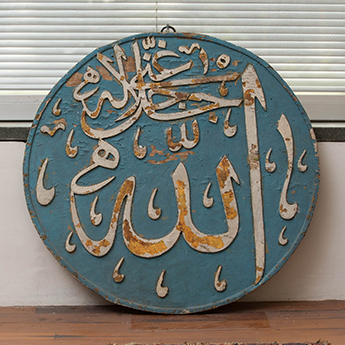

 UP
UP


